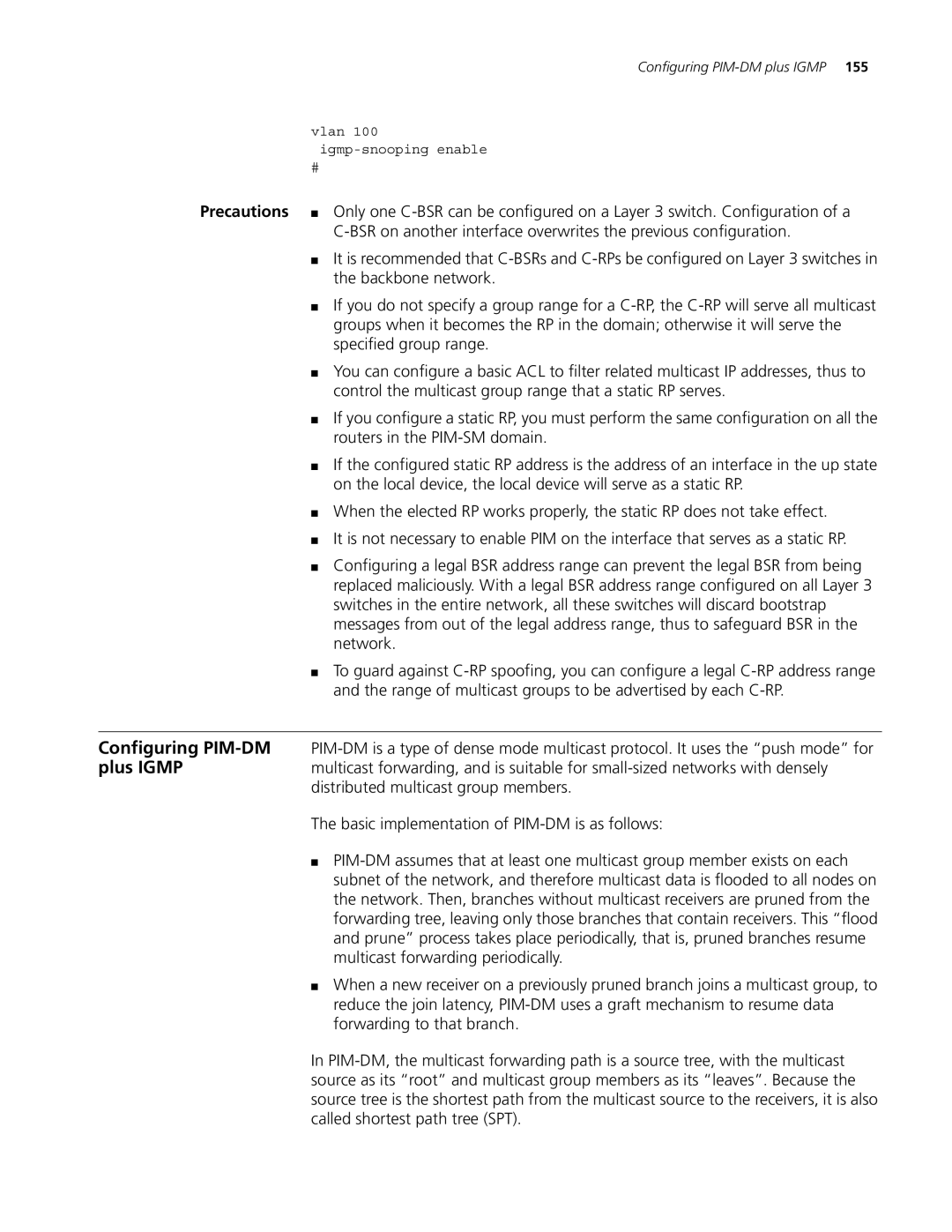Configuring PIM-DM plus IGMP 155
vlan 100
#
Precautions ■ Only one
■It is recommended that
■If you do not specify a group range for a
■You can configure a basic ACL to filter related multicast IP addresses, thus to control the multicast group range that a static RP serves.
■If you configure a static RP, you must perform the same configuration on all the routers in the
■If the configured static RP address is the address of an interface in the up state on the local device, the local device will serve as a static RP.
■When the elected RP works properly, the static RP does not take effect.
■It is not necessary to enable PIM on the interface that serves as a static RP.
■Configuring a legal BSR address range can prevent the legal BSR from being replaced maliciously. With a legal BSR address range configured on all Layer 3 switches in the entire network, all these switches will discard bootstrap messages from out of the legal address range, thus to safeguard BSR in the network.
■To guard against
Configuring
plus IGMPmulticast forwarding, and is suitable for
The basic implementation of
■
■When a new receiver on a previously pruned branch joins a multicast group, to reduce the join latency,
In
